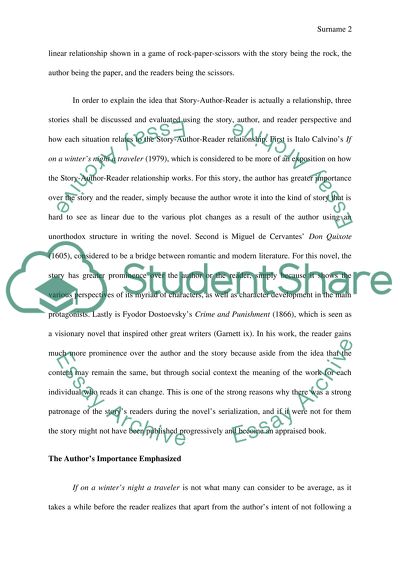Cite this document
(“The Story-Author-Reader Relationship Essay Example | Topics and Well Written Essays - 1750 words”, n.d.)
The Story-Author-Reader Relationship Essay Example | Topics and Well Written Essays - 1750 words. Retrieved from https://studentshare.org/literature/1495951-the-story-author-reader-relationship
The Story-Author-Reader Relationship Essay Example | Topics and Well Written Essays - 1750 words. Retrieved from https://studentshare.org/literature/1495951-the-story-author-reader-relationship
(The Story-Author-Reader Relationship Essay Example | Topics and Well Written Essays - 1750 Words)
The Story-Author-Reader Relationship Essay Example | Topics and Well Written Essays - 1750 Words. https://studentshare.org/literature/1495951-the-story-author-reader-relationship.
The Story-Author-Reader Relationship Essay Example | Topics and Well Written Essays - 1750 Words. https://studentshare.org/literature/1495951-the-story-author-reader-relationship.
“The Story-Author-Reader Relationship Essay Example | Topics and Well Written Essays - 1750 Words”, n.d. https://studentshare.org/literature/1495951-the-story-author-reader-relationship.


